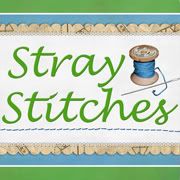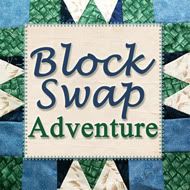Lantana seems to be beautiful no matter how hot it gets
Who would think that anyone in Hawaii would need a quilt, let alone make one? Originally, the native Hawaiian population was introduced to quilting in the early 19th century by visiting missionaries who attempted to teach the traditional method of piecing. This method, however, was contrary to the cultural style of the Hawaiians who viewed the cutting and repiecing of fabric to be a waste of time and materials so they modified to technique to suit their style. And so, the Hawaiian Quilt was born.
I thought I would share with you the progress I have made on my Hawaiian quilt. This is a class that I am taking through quiltuniversity.com. This is the fourth class I have taken there and have enjoyed each one. The teachers are great with very detailed lessons. You can also chat with the teachers and other classmates through a chat system so you can have all of your questions answered plus you can share your progress with the class. They have a very diverse offering of classes, many of which I still would like to take.
Now, on with my Hawaiian quilt. One of the hardest aspects of this class, at least for me, was designing. You can use a prepared pattern but I thought I should get the full experience of the class. The first thing I did was draw out and cut the pattern in miniature on an 8 1/2" square piece of paper. It was just like cutting snowflakes back in grade school. Three folds to make the paper into 8ths. Then draw out your idea for a pattern.
My miniature Hawaiian Quilt pattern opened up
Then came the challenge of drawing this same pattern full size, for me this was a 44" square (still folded into 8ths as before). Thank goodness for pencil and eraser. It took me a whole morning to get this step accomplished!
Pattern drawn out with seam allowance included (whole square measured 44" square)
Whew! Finished that step. Now to cut out the 1/8th pattern piece. At least that was relatively simple. Oh, forgot an important part. You also have to cut two square pieces of fabric, one piece for the background, one piece for the applique. You fold these the same way you do the paper and lightly crease the folds by pressing. Take the topping piece (I selected a light blue fabric) already folded and pressed and lay the pattern on top, making sure to match the center point, the bias fold, and the straight fold. Pin down the pattern only pinning through one or two layers of fabric.
Pattern pinned through all 8 layers of fabric
Once the pattern is all pinned, trace around the pattern with your choice of marking pen.
Pattern traced and paper pattern removed
Remove pattern. Pin through all 8 layers of fabric to stabilize while you cut. Carefully cut out your design.
Pinned through all 8 layers of fabric
Fabric cut and still pinned
Open up your background fabric on a flat surface. Take your applique piece and align the piece into one of the 1/8th pie shapes, making sure to line up the center point. (This was a little bit of a challenge for me as I didn't have a center point but I figured it out with the piece I had cut out.). Remove stabilizing pins. Here you will pin just the single bottom layer of the applique to the fabric to the background fabric.
Close up showing how only the bottom layer of fabric is pinned to the background fabric
Applique opened up 1/4
Next, carefully lift 4 layers of fabric and gently unfold them along the bias fold line. This will expose 1/4 of the overall design. Once again, pin the single bottom layer of fabric. Now, unfold the top two layers of fabric. This will expose one half of the design. Again, pin the bottom layer of fabric.
This time you will fully open your design and pin it all down in place carefully aligning all of the creases you previously pressed into the fabric.
Design fully opened and pinned
Next is the basting step. Make sure to baste at least 1/2" away from the edge of your applique fabric taking stitches that are about 3/4" long. That is the step I'm on right now. Start in the center and work your way around in a clockwise (or counter-clockwise) manner until it is all basted down.
Basting stitches
After basting all of the applique pieces in place, press out the crease marks in both pieces of fabric.
My next class is Friday, I will learn how to do needleturn applique. I will leave you with one of the many Hawaiian quilt superstitions: "When designing a Hawaiian quilt, never create human figures, it is believed that the figures will walk and visit you at night".
Remember to become a follower to enter my first GIVEAWAY!
Have a great and wonderful Wednesday!!!



































4 comments:
Fantastic explanations, Linda! Thanks for sharing. I have always wanted to create some Hawaiian applique...but the to-list is so full, it probably won't be for another decade or two. LOL
Thanks for taking the time to comment on my stash post, too. I couldn't find your public email address.
Happy Quilting,
Heather
Heather - I enjoyed sharing it - now to see if I can actually finish it. I hope to make another one in different colors for a Christmas gift so I'm hoping it won't take too long to complete. For my email, if you click on the little envelope located upbove "comments", above "labels", you will find it there.
Heather, I also just added an email link to my profile!
This looks great! Who cares if they won't use it in Hawaii...I'll take it. :)
Post a Comment